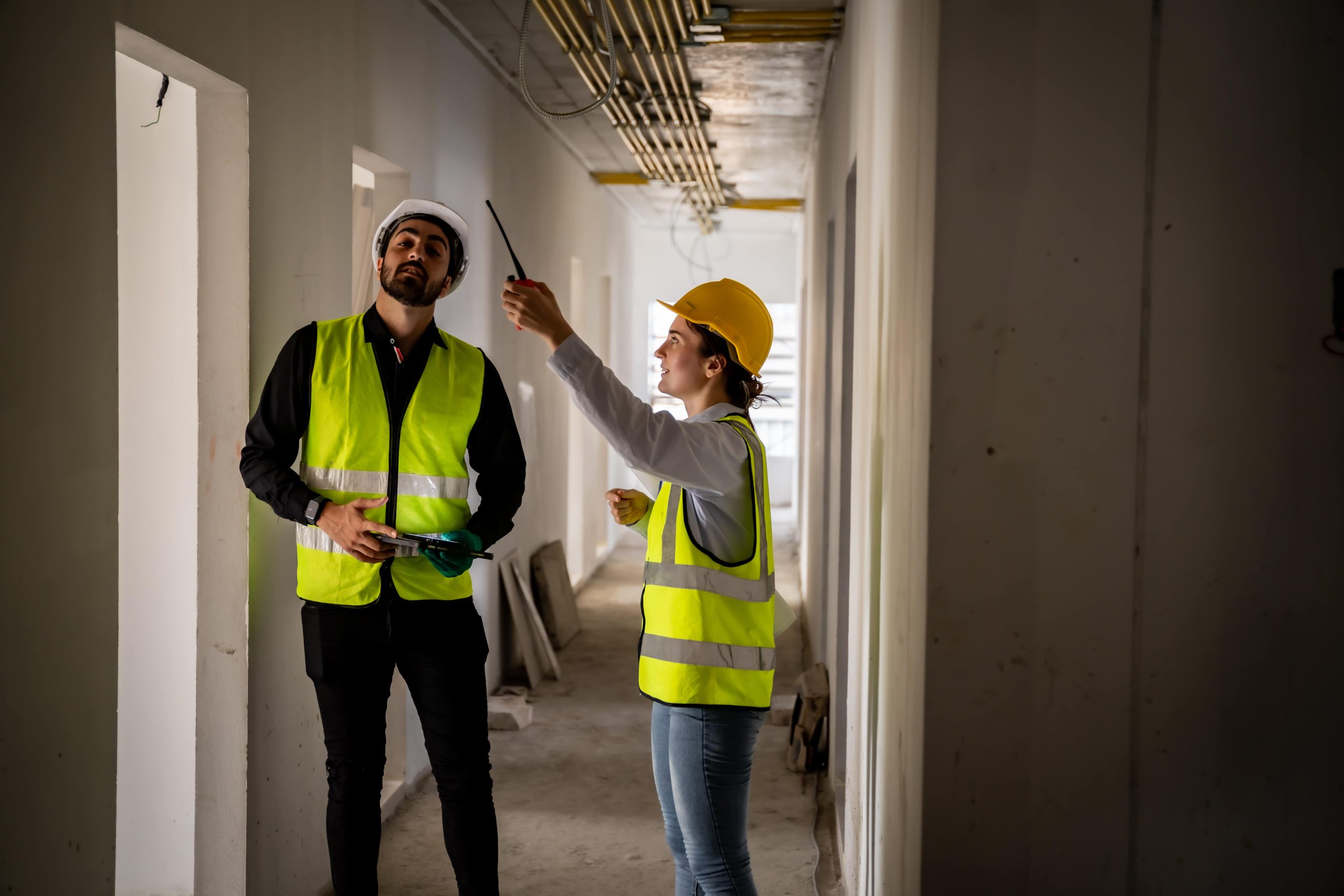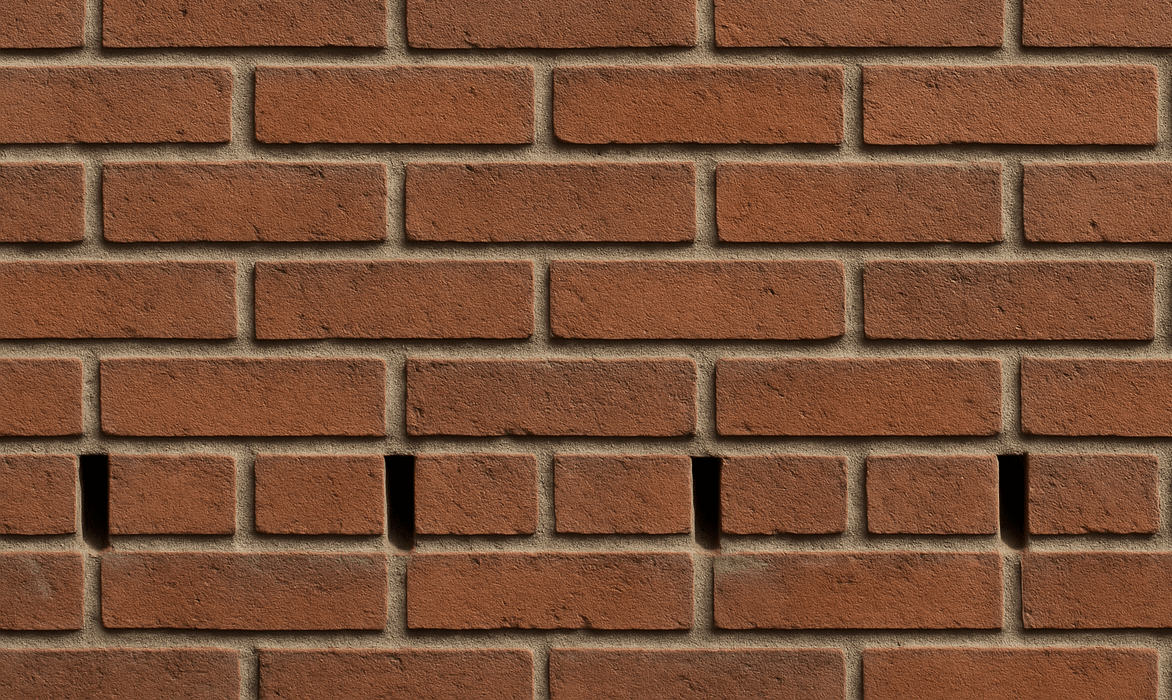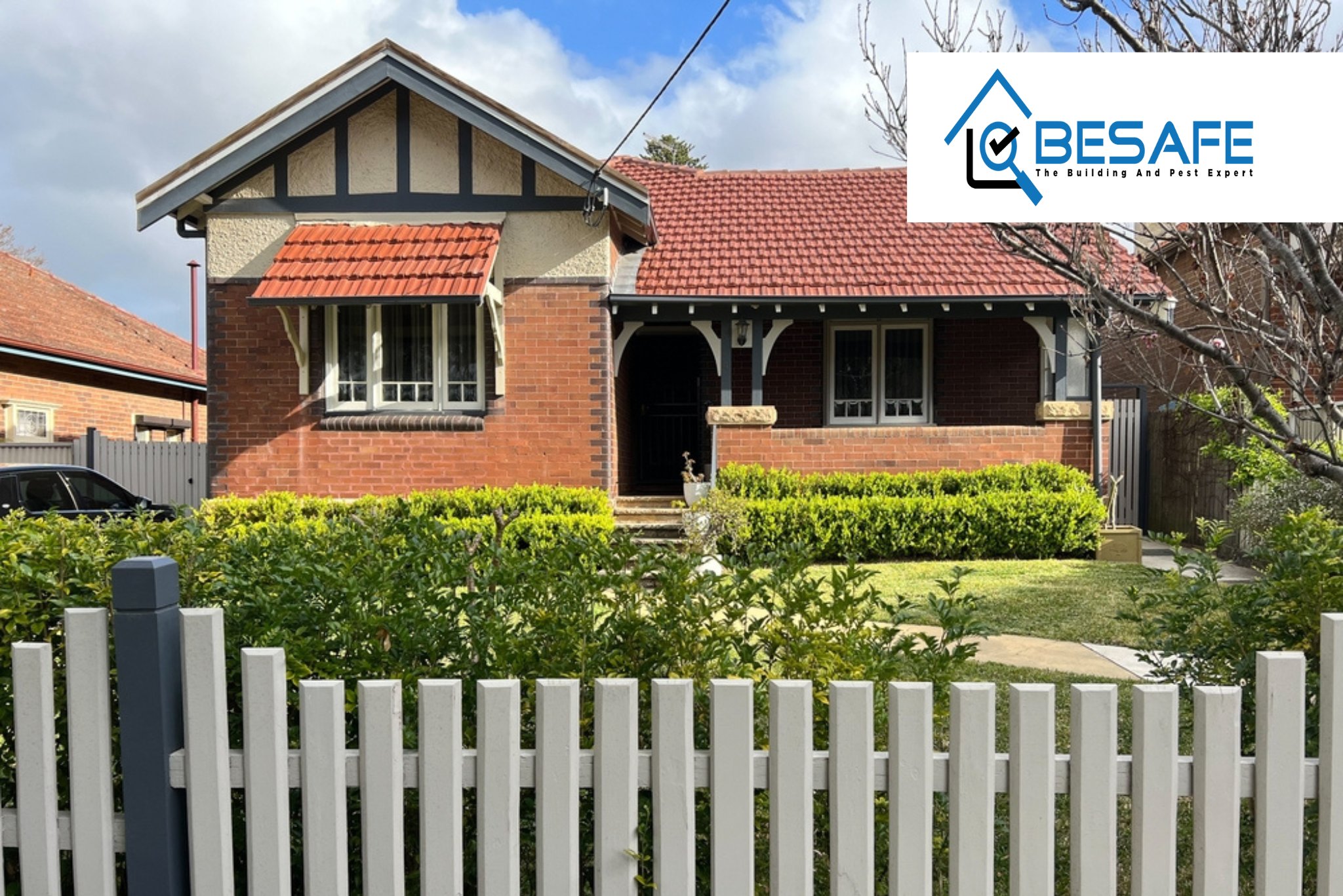
How To Spot Drainage Problems: 9 Warning Signs To Look For Before Making A Purchase
Drainage problems are one of the most underestimated threats facing homebuyers today. What may seem like a harmless puddle in the garden or a faint water stain on the ceiling can, in reality, signal deeper issues. Damaged foundations, entire ceiling replacement and even structural movement can quickly turn what looked like a smart investment into an overwhelming financial burden.
Water damage remains a major concern for both homeowners and businesses across Australia, with QBE data showing that water-related losses made up 24% of property insurance claims between 2018 and 2021. And, with extreme weather events on the rise, particularly heavy rainfall, flash flooding, and severe storms, the risks are growing, especially in high-density urban areas like Sydney and the Central Coast.
Unfortunately, the signs of drainage issues aren’t always immediately obvious. Problems often develop slowly and quietly, becoming apparent only after significant damage has occurred. Drainage is not always top of mind when it comes to purchasing a property, but many buyers are often caught off guard, facing unexpected repair costs that can disrupt their long-term plans for the property.
So, identifying these warning signs early is key to avoiding unnecessary headaches and protecting a potential investment.
The key to avoiding these costly surprises lies in early detection. As licensed builders and building inspectors, we’ve seen the impact of drainage issues firsthand. That’s why professional building inspectors play such a critical role during the property buying process.
In this article, we cover the most common drainage issues, how to identify them before they become major problems, and the red flags to watch for when inspecting a property.
Common Signs of Drainage Problems
A thorough property walkthrough provides prospective buyers with a valuable opportunity to assess the layout and finishes, and whether it suits their lifestyle and needs. But it’s also the ideal time to look for early warning signs of drainage issues.
Recognising these indicators early allows buyers to make informed decisions, whether that means negotiating repairs before settlement or planning for future maintenance.
- Standing Water in the Yard or Near the House: If water lingers in the yard, especially after rainfall, it’s often a sign of serious drainage issues. Persistent moisture can create muddy areas, stunt grass growth, and become a breeding ground for mosquitoes and pests. More critically, water that pools near your home’s foundation can seep into the concrete, leading to cracks and long-term structural damage.
- Overflowing Gutters and Downpipes: Overflowing gutters during rainfall usually point to a blocked or poorly designed drainage system. When water spills over the gutter edge, it can cause staining on walls, damage to exterior finishes, and erosion around the foundation. For context, 25 mm of rain on a 93-square-metre roof produces over 2,700 litres of runoff, making proper water diversion essential.
- Unusual Smells or Sewer Odours: Persistent foul smells may indicate a blocked or broken drain line. These odours often accompany gurgling sounds from sinks or toilets and may suggest issues with the main sewer system or a dry P-trap allowing gases to escape.
- Slow Draining Sinks or Toilets: If sinks or toilets are slow to drain, it may be more than a simple clog. While local blockages caused by hair or soap buildup are common, simultaneous drainage issues across multiple fixtures could point to a larger problem in the property’s main drainage or sewer lines..
Hidden Issues You Might Miss
Not all drainage issues are as clear as puddles or odours. Some warning signs are subtle and easy to overlook but can indicate deeper problems that grow worse over time. Catching them early is key to preventing structural damage and costly repairs.
- Mold or Mildew Near Baseboards or Ceilings: Mold growing near baseboards, behind furniture, or along ceiling corners suggests hidden moisture caused by poor drainage or ventilation. Watch for peeling paint, musty odours, or baseboards beginning to pull away from the wall.
- Cracks in Walls or Foundations: While not all cracks are cause for alarm, diagonal or horizontal ones wider than 5mm can indicate structural movement linked to poor drainage. If you notice cracks that grow longer or wider over time, or if water is visibly seeping through them, it’s time for a professional assessment.
- Displaced Landscaping or Signs of Erosion: Soil displacement is another subtle clue that drainage issues are affecting the property. Keep an eye out for exposed roots, shifting retaining walls, bare patches in the lawn, or channels forming where water runs across the yard. These signs may indicate erosion caused by poor drainage.
- Efflorescence or Flaking on Basement Walls: White, chalky deposits on retaining walls, known as efflorescence, are an indicator that water is entering and evaporating through the masonry. While efflorescence itself isn’t dangerous, it often precedes more serious issues like spalling, where large patches of the wall surface flake or crumble away. When left untreated, this moisture intrusion can weaken the structure and invite mould growth.

What Causes These Drainage Issues?
Drainage problems are caused by a number of factors (both individually and in combination,) creating complex issues that aren’t always obvious at first glance. Understanding the root causes is essential to addressing them effectively and protecting your property from long-term damage. Here are some of the most common culprits we encounter during property inspections:
Blocked or Poorly Designed Guttering
Gutters are designed to channel rainwater away from the roof and foundation, but when obstructed by leaves, debris, or sediment, their function is compromised. Blocked gutters cause water to overflow, leading to damp external walls, damage to fascia boards, and moisture intrusion into ceiling spaces.
Additionally, gutters that are incorrectly sized, poorly angled, or insufficiently supported can result in water pooling instead of flowing efficiently to downpipes. Over time, this can contribute to structural damage and increase the risk of mould and rot within the building envelope.
Blocked Stormwater Drains
Stormwater drainage systems are critical for managing surface water runoff. However, during periods of heavy rain or storms, these systems can become quickly overwhelmed or blocked by organic debris, sediment, and litter.
In some cases, we’ve found incorrectly connected sewer pipes feeding into stormwater systems, creating serious blockages that require specialised equipment to diagnose and repair. Long-term exposure to pooling water from blocked drains can significantly weaken the property’s infrastructure.
Tree Roots Invading Pipes
Tree roots are one of the most common and persistent causes of drainage issues. Even the smallest cracks or joints in underground pipes can attract roots, which grow into the pipes and eventually block or break them. Once inside, roots not only restrict water flow but also create leaks and cause surrounding soil to shift, leading to structural damage that worsens over time if left untreated.
Improper Grading Around the Property
Proper grading ensures water flows away from the home, not toward it. The recommended minimum slope is approximately 2% (about 75 mm over 3 metres). When a property’s yard or landscaping lacks this grade, water tends to pool near the foundation.
This can lead to a host of problems, including water seepage into concrete, the development of cracks, erosion around footings, and conditions ideal for mould and mildew growth. Over time, poor grading may also contribute to soil instability and even the formation of sinkholes in severe cases.
Clogged or Damaged Underground Pipes
Underground pipes are out of sight, which means problems often go unnoticed until significant damage occurs. These pipes can deteriorate due to a variety of reasons: soil movement, corrosion, tree root intrusion, or external pressure from vehicles and heavy equipment.
Additionally, poorly installed or ageing pipe systems often feature improper joins or weak connections. We regularly identify these kinds of issues during inspections, especially in properties with a history of water pooling or inconsistent drainage.
Runoff from Neighbouring Properties
Drainage issues don’t always originate on the property. Water naturally flows downhill, and alterations made by neighbours, like new driveways, landscaping, retaining walls, or even raised garden beds, can redirect water. When this happens, the result can be unexpected pooling, erosion, or flooding during heavy rains.
Unfortunately, most local councils treat this as a civil matter, meaning it’s often up to the affected parties to negotiate a solution. Understanding these dynamics is important when assessing a property, particularly one located on or near a slope.
Why These Signs Shouldn’t Be Ignored
Drainage problems may start small, but rarely stay that way. Ignoring the early signs of drainage issues puts your home, your health, and your finances at risk. From foundation damage and health hazards to rising repair costs and environmental concerns, the consequences of inaction are far-reaching.
Structural Damage to Foundations
One of the most critical risks associated with poor drainage is long-term structural damage. When water consistently accumulates near the base of a building, it can penetrate the foundation over time. In colder climates, this moisture expands during freeze-thaw cycles, worsening existing cracks and accelerating structural deterioration.
Additionally, prolonged water exposure erodes the soil beneath footings, leading to uneven settling. This movement can manifest as cracked walls, misaligned doors, and windows that no longer operate correctly. Once a foundation begins to shift, repairs can be complex and costly, ranging from $2,000 for minor reinforcement to over $35,000 or more for major restoration work.
In many cases, early action could have prevented the escalation entirely.
Health Risks
Moisture intrusion is not only detrimental to a building’s structure but also poses significant health risks. Damp conditions provide an ideal environment for mould growth, particularly black mould, which produces toxins known to affect respiratory health, cognitive function, and immune response. Additionally, standing water can harbour harmful pathogens and bacteria, which present increased risks to elderly individuals and those with compromised immune systems.
Escalating Costs Due to Delayed Maintenance
Deferring necessary drainage repairs often leads to exponentially higher costs over time. Minor maintenance costs far less and prevents extensive damage. In contrast, neglected issues may evolve into large-scale repairs, including foundation reinforcement or internal waterproofing.
Moreover, many insurance providers are increasingly declining coverage for water damage deemed preventable through proper maintenance. As a result, property owners may face not only the cost of repairs but also increased insurance premiums or outright policy exclusions. Professional inspections and early intervention serve as a prudent investment in the long-term protection of your property.
Environmental Impacts
Inadequate or obstructed drainage systems can have broader environmental implications, too. Stormwater runoff from poorly maintained drains can carry pollutants such as oils, chemicals, fertilisers, and waste directly into nearby creeks, rivers, and marine environments. This runoff contributes to the degradation of water quality and local ecosystems.
Elevated Flood Risk
Poor drainage is a leading contributor to localised flooding, particularly in low-lying or flood-prone areas. When stormwater drains are blocked or inadequately sized, they are unable to manage the volume of water generated during heavy rainfall events. This can result in surface flooding, which damages buildings, landscaping, and infrastructure.
Beyond property loss, floodwaters can present serious safety hazards, including electrical risks and structural instability. In extreme cases, flash flooding due to overwhelmed drainage systems can pose a direct threat to life.

The Limitations of DIY Inspections and When to Call a Professional Inspector
While some property concerns can be identified with a keen eye and basic tools, drainage problems often require a deeper level of expertise. They are an indispensable part of any property transaction. For buyers, a professional inspection can uncover hidden drainage problems that might otherwise lead to costly repairs after settlement. Identifying these issues early can provide valuable leverage during price negotiations or contract discussions.
Sellers also benefit by addressing drainage concerns proactively, demonstrating responsible property management and increasing buyer confidence. Moreover, thorough documentation from a qualified inspector can streamline the sale process and potentially increase market value.
For new construction projects, professional drainage inspections ensure compliance with building regulations and inspection requirements, something that informal, DIY assessments cannot adequately fulfil.
Conclusion
Drainage problems represent a significant and costly threat to any property. Unfortunately, many homeowners overlook the early warning signs until the damage has progressed to a point where serious structural foundation issues, health risks from mould, and escalating repair costs become unavoidable.
Engaging professional building inspectors is an essential step to identifying these problems before making a purchase, and they can escalate. With years of experience, cutting-edge technology, and a commitment to thoroughness, BeSafe Inspections specialises in delivering comprehensive building and pest inspection services tailored specifically to the Central Coast and Sydney’s diverse property market.
Whether you’re buying, selling, or simply aiming to protect the safety and integrity of your investment, our accurate, timely, and detailed inspections provide the peace of mind you deserve, empowering you to make confident, informed decisions about your property.
Featured news articles

Dilapidation Reports: What They Are and Why Property Owners Need Them
Learn what a dilapidation report is, why it’s essential before construction or demolition, and how it protects property owners from damage claims and disputes.

What are Weep Holes in Brickwork? Why Pre-Purchase Building Inspections Are Important
Learn what weep holes are, why they are vital for your home’s structural integrity, and how professional property inspections can prevent costly moisture and pest damage.

What is a Strata Report? Your Essential Guide Before Buying Property
Discover what a strata report is and why it’s crucial before buying a strata-titled property. Learn how it reveals financial, legal, and management insights to protect your investment.

How To Spot Drainage Problems: 9 Warning Signs To Look For Before Making A Purchase
Discover the 9 most common drainage issues to spot before purchasing a property. Protect your investment, learn expert tips to avoid costly repairs. Read now!

Top 7 Building Defects Found in New Sydney Properties: How to Spot Them
New doesn’t always mean defect-free. In Sydney’s booming property market, construction issues are more common than many buyers realise. From waterproofing failures to structural cracks, this guide breaks down the 7 most frequent defects found in new builds, and how to detect them before they escalate.

Pre-Purchase Building Inspection vs Pest Inspection: What You Need To Know
Buying property? Learn the key differences between pre-purchase building inspections and pest inspections, and why relying on just one could leave you exposed. Learn how these two essential inspections work together to give you a complete picture of a property’s condition, uncover hidden risks, and help you make a confident, informed investment decision.

Ultimate Personal Property Inspection Checklist Before Booking an Inspection
Discover why having a personal property inspection checklist is essential before booking a professional inspection. Taking the time to walk through a property with your own checklist allows you to identify areas of concern, prioritise your questions, and ensure nothing is overlooked. While it won’t replace the expertise of a licensed inspector, it empowers you to approach the inspection process with greater clarity and confidence.

First-Time Buyer’s Guide to Property Inspections in Sydney
Purchasing your first home in Sydney? Don’t skip the property inspection. This comprehensive guide provides key insights into what to expect during an inspection, common issues to be aware of, and how a professional assessment can protect your investment and save you money in the future.

The Impact of Sydney’s Building Boom on Inspection Standards
Sydney’s building boom is fueling rapid development, but it’s also raising concerns about the integrity of both NSW building standards and inspection quality. As construction accelerates, reports of defects are on the rise, raising concerns about the long-term integrity of new properties. With increasing pressure on the construction industry, learn how this affects inspection standards and what it means for property buyers.

How Much Does A Building Inspection Cost In Sydney?
A building inspection is an essential step in the Sydney property purchasing process, providing buyers with critical insights into potential structural issues and hidden defects. Inspection costs vary based on property size, type, and additional services required. This guide offers a comprehensive overview of building inspection pricing, key cost factors, and strategies to ensure purchasers receive the best value for their investment.

Should You Be Present at a Building & Pest Inspection? What You Need To Know
When you’re in the process of buying a property, a building and pest inspection is a crucial step in making sure you’re making a sound investment. However, one common question is whether it is necessary to attend the inspection in person. While it may seem convenient to forgo being present, attending the inspection offers valuable opportunities to gain insights directly from the expert.

What Is An Unsatisfactory Building Inspection?
An unsatisfactory building inspection can uncover hidden issues that may impact your property purchase. From structural concerns to plumbing and electrical problems, understanding what these findings mean and how to handle them is crucial.

Signs It’s Time To Walk Away From A Property
Investing in a property is exciting, but hidden building faults, pest damage, and financial red flags can all indicate it’s time to reconsider your choice. Understanding these crucial warning signs can help protect your investment and ensure you find a home that meets your needs

How To Find The Right Building Inspector
Discover essential tips for finding the right building inspector in Australia. Learn what to look for, questions to ask, and how to ensure you choose a qualified professional for your property inspection needs.

What Does a Building and Pest Inspection Cover?
A building and pest inspection is vital for any property transaction. This guide covers what these inspections include, from structural assessments to pest detection, and explains why they’re essential for safeguarding your investment. Learn about the advantages of professional inspections and find out how BeSafe Inspections can help ensure your property is in top condition.

Introducing our new strata inspector
BeSafe’s Strata Inspector Tina has joined the team to help us expand our capacity for delivering strata reports to unit and apartment buyers in Sydney.

Why Sydney homebuyers need independent property inspection reports
Property inspection reports are essential for Sydney buyers who want to ensure they get exactly what they are paying for.

Before you buy: Is your new house hiding leaks?
If you’re looking to buy a home in Sydney, a pre-purchase building inspection is vital to detect household leaks and rising damp.

Common Defects Found In Buildings
If you’re in the process of purchasing a new property, it can be daunting to consider the repairs it may need. Discover the most common building defects, their causes, and how to address them effectively to make informed decisions and protect your investment.

Building Inspections
Looking to purchase a property but wondering if you actually really need a building inspection

The Cause Of Wall Cracks
Understanding the cause requires consideration of a large number of factors

Cracks in Buildings
The sight of cracking can set off alarm bells in anyone considering purchasing a property


